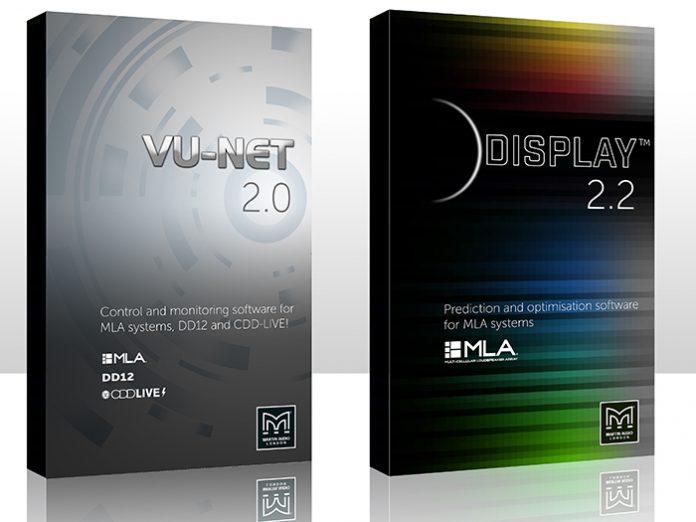Martin Audio has announced a significant upgrade to Display, the software brain of the MLA Series. This represents what R&D Director, Jason Baird, now describes as “the world’s most accurate prediction and optimisation array software, bar none.”
Display is the numerical optimisation process that eliminates lengthy trial-and-error tuning sessions, so that an MLA Series system achieves the required audience coverage straight out of the box.
Based on a highly accurate acoustic model of array behaviour, it gives a very precise prediction of the direct sound produced over the audience as well as areas where sound is to be minimised. It takes the guesswork out of array design, deployment and control – generating ready-to-use DSP filter configurations and comprehensive rigging information, including mechanical load safety analysis.
The patented optimisation process evaluates thousands of potential array configurations against multiple target functions – such as frequency response, flatness and sound leakage into non-audience areas. With the computer working behind the scenes, the engineer retains full artistic control over the system’s balance or ‘house curve’ – Display simply replicates what the engineer hears at the mix position to the entire audience.
This Display software upgrade represents the biggest of its kind so far, and the key improvements and added functionality will delight both new and regular users. A significant amount of in-the-field research and feedback was carried out across a series of tours and festivals to validate this latest upgrade.
Display 2.2 can run on the latest devices and Windows operating systems offering the user:
- Increased Accuracy.
- Acoustic data has been re-measured using more advanced techniques and re-calibrated to deliver the most accurate prediction and optimisation software on the market.
- Hard avoid feature is optimised more effectively for varying distances from the array, while the introduction of a leakage threshold limits the effort of reducing output below a certain level.
- Improved Sonic Consistency.
- Elemental EQ is now full-band for all MLA systems making them better sounding than ever before.
- MLA family arrays exhibit close to flat average audience response making Input EQ between them even more complementary.
- Faster Splay Optimisations.
- On average, splay optimisation takes 30% less time than with Display 2.1
- A new Express Setup tool is also available when simple day-to-day arrays and default Display settings are applicable.
- Enhanced Usability.
- Generates printable rigging reports for all types of system.
- More room for the audience and goal value graphs in EQ tab.
- Easier access to the most recent files.
- New option for reference level or average audience level static plot.
- Auto-scale frequency response plot in SPL View.
- Richer Graphics.
- A new Matlab graphics system is used throughout, with plots and axes looking richer and smooth.
Martin Audio’s Research Engineer Ambrose Thompson was responsible for leading the software development, and he commented, “MLA is the clear leader in providing superior coverage for every member of the audience while ensuring sound spillage is controlled. Now with this enhanced functionality it’s even more accurate, faster and easier to use, and makes MLA sound better than ever before. We’ve seen others enter the market with array prediction software and we just wanted to ensure that nothing comes close to the exactness of Display.”
To take into account the input EQ changes required, Display 2.2 is being released in tandem with VU-NET 2.0 control and monitoring software. This allows for the Input EQ to be adapted automatically to the new output from Display 2.2, and VU-NET 2.0. Furthermore, it will also support CDD-LIVE!, enabling a cohesive architecture of control and monitoring for Martin Audio systems.
The Display 2.2 upgrade is automatically sent to existing MLA owners, while VU-NET 2.0 can be downloaded from Martin Audio’s software webpage here.






